OS grid reference TQ254784 Sovereign state United Kingdom Dialling code 020 | Opened 1937 | |
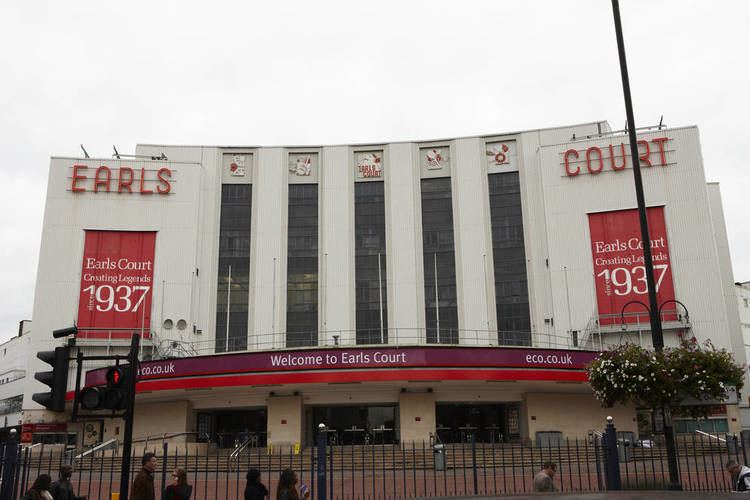 | ||
Population 9,104 (2011 Census.Ward) Similar Earls Court Exhibition Centre, Natural History Museum, Hyde Park, Earl's Court tube station, London Eye | ||
Led zeppelin live from earl s court 05 25 1975 soundboard
Earl's Court is a district in the Royal Borough of Kensington and Chelsea in central London, bordering the sub-districts of South Kensington to the east, West Kensington to the west, Chelsea to the south and Kensington to the north. The Earl's Court Exhibition Centre was one of the country's largest indoor arenas and a popular concert venue until its closure in 2014.
Contents
- Led zeppelin live from earl s court 05 25 1975 soundboard
- Stairway to heaven earl s court arena 5 17 1975
- Early history
- Railway line
- Population
- 20th century
- Blue plaques
- Other notable residents
- Film locations and novels
- Local attractions
- East Earls Court
- West Earls Court
- Architecture
- Gay area
- Districts
- Tube stations
- Other
- Other Earls Courts
- References
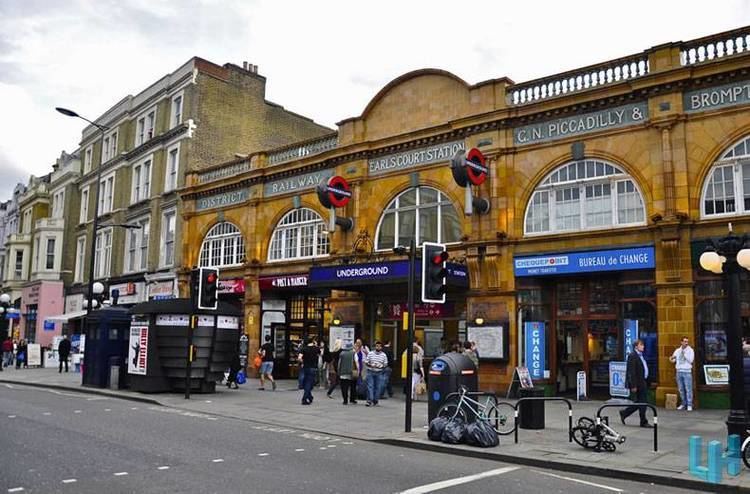
Stairway to heaven earl s court arena 5 17 1975
Early history
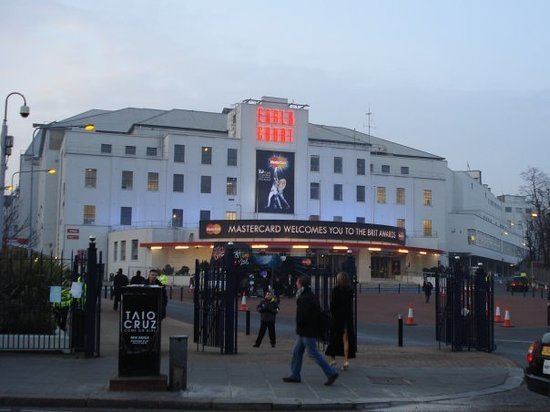
Earl's Court was once a rural area, covered with green fields and market gardens. The Saxon Thegn Edwin held the lordship of the area prior to the Norman conquest. For over 500 years the land, part of the ancient manor of Kensington, was under the lordship of the Vere family, the Earls of Oxford and descendants of Aubrey de Vere I, who held the manor of Geoffrey de Montbray, bishop of Coutances, in the Domesday Book in 1086. By circa 1095, his tenure had been converted, and he held Kensington directly of the crown. A church had been constructed there by 1104. The earls held their manorial court where Old Manor Yard is now, just by the London Underground station. Earl's Court Farm is visible on Greenwood's map of London dated 1827.
Railway line
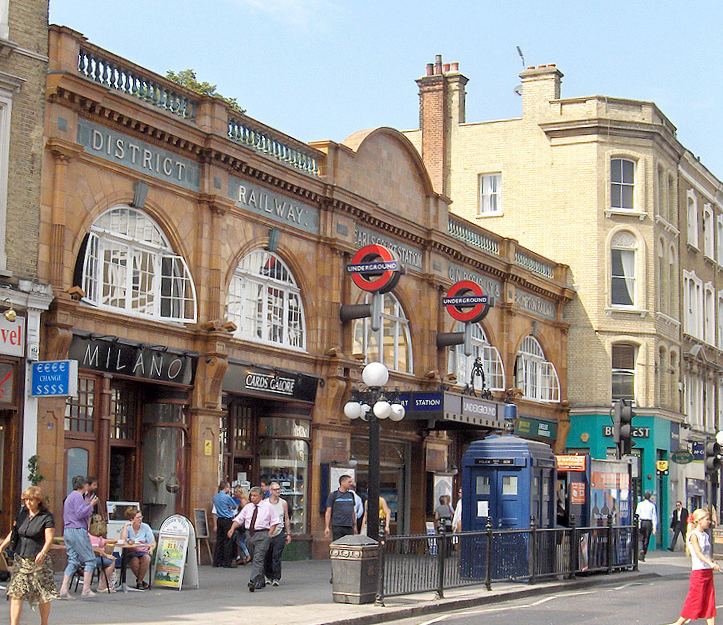
The construction of the Metropolitan District Railway station in 1865–69 was a catalyst for development. In the quarter century after 1867, Earl's Court was transformed into a densely populated suburb with 1,200 houses and two churches. Eardley Crescent and Kempsford Gardens were built between 1867 and 1873, building began in Earl's Court Square and Longridge Road in 1873, in Nevern Place in 1874, in Trebovir Road and Philbeach Gardens in 1876 and Nevern Square in 1880.
Population
The Earl's Court ward had a population of 9,659 according to the 2001 census.
20th century
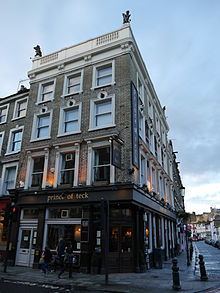
Following the Second World War a number of Polish immigrants settled in the Earl's Court area leading to Earl's Court Road being dubbed the "Danzig Corridor". During the late 1960s a large transient population of Australian and New Zealand travellers began to use Earl's Court as a UK hub and over time it gained the name "Kangaroo Valley". It was at the time one of the cheapest areas close to central London, and up until the 1990s remained a somewhat down-at-heel district compared to its more upmarket neighbours to the North and East. The area was, for a long time, the place to buy and sell the ubiquitous VW camper van. This moved off in the direction of the New North Road (near Old Street EC1) in the 1980s. Today, while there are still significant numbers of students or other people on temporary visas, many of the Australians and New Zealanders appear to have moved on to now-cheaper areas further North and West. The name "Kangaroo Valley" (see Little Australia) lingers on in the usage of older expatriate Australasians and Australasian visitors, as does the alternative nickname "Kangaroo Court".
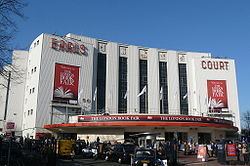
The change in the area's population is largely owed to rocketing property prices and the continued gentrification of the area. The scale of change is illustrated by the economic divide between the eastern and western areas of Earl's Court. Despite fighting fiercely for the exhibition centre it has, according to Dave Hill in The Guardian, been destroyed by this economic growth.
Blue plaques
Other notable residents
Film locations and novels
Local attractions
Earl's Court is within walking distance of High Street Kensington, Holland Park, Kensington Gardens/Hyde Park, the Royal Albert Hall, Imperial College, the Natural History, Science and Victoria and Albert Museums.
The former Earl's Court Exhibition Centre opened in 1937, with its striking Art Deco façade facing Warwick Road. A new entrance to Earl's Court tube station was constructed to facilitate easy access to the Exhibition Centre, including direct entrance from the underground passage which connects the District and Piccadilly lines. This was however closed in the 1990s at around the time the capacity of the Exhibition Centre was expanded by the construction of a second exhibition hall, Earl's Court 2, which was opened by Princess Diana, herself a former Earl's Court resident. In its heyday the Earl's Court Exhibition Centre hosted many of the leading national trade fairs, including the annual Motor Show and Royal Agricultural Show, as well as Crufts dog show and the military Royal Tournament. The biggest trade fairs migrated to the National Exhibition Centre at Birmingham International Airport when it opened in 1988. The longest-running annual show was the Ideal Home Show in April, which attracted tens of thousands of visitors. Otherwise, it was increasingly used as a live music venue, hosting events such as the farewell concert by the boy-band Take That. At the other end of the scale, it was also used for arena-style opera performances of Carmen and Aida. Archive Movietone newsreel footage (which can be seen on YouTube) captures a unique and powerful rehearsal of the Berlin Philharmonic Orchestra under Wilhelm Furtwängler playing the end of Brahms' Fourth Symphony during a post-war reconciliation visit to London. The venue has now been permanently closed for demolition by its owner Capital & Counties and it is expected that the site will be redeveloped by 2020 with a mixture of office and residential buildings.
A further landmark building is the Empress State Building, located in Lillie Road, which was completed in 1962, and is a unique triangular office building with concave bow façades. It was occupied by the Ministry of Defence for 30 years. It underwent extensive refurbishment and updating prior to its occupation by the Metropolitan Police around 2003.
The Finborough Theatre, which opened in 1980, is the neighbourhood's local theatre.
The Troubadour is a coffee house and a small music venue, which has hosted emerging talent since 1954 – including Bob Dylan, Jimi Hendrix and Elvis Costello.
Earl's Court Village is the centre of the British Filipino community, with a number of restaurants, supermarkets (many of which also serve take-away food) and banks.
The area is also home to a police box of the type resembling the Doctor's time machine in the BBC television series Doctor Who. The blue police box located outside Earl's Court underground station in Earl's Court Road is actually a modern-day replica of the traditional GPO police signalboxes that were once a common sight in the UK until the early 1970s. Used as a kind of specialised telephone kiosk for policemen on their "beat", the boxes were eventually phased out with the introduction of personal radios in the police force.
There are many examples of traditional craftsmanship and the creative industries in the Earl's Court area, such as the Earl's Court Glass-Blowing, a world-famous mannequin factory.
The Prince of Teck is a Grade II listed pub at Earl's Court Road.
East Earl's Court
"East Earl's Court" lies to the south of Cromwell Road and to the east of Earl's Court Road (a main north-south artery which bisects Earl's Court) and is home to many multimillion-pound flats and houses in smart garden squares and residential streets. The southern boundary of Earl's Court is Old Brompton Road, with the area to the west being West Brompton, and the area to the south east being the Beach area of Chelsea. Here, (based on sale prices per square foot), the Boltons, has some of the most costly real estate in Europe. Houses in the Boltons have sold for up to £20 million. The eastern boundary of Earl's Court is Collingham Gardens and Collingham Road, east of which is South Kensington.
West Earl's Court
"West Earl's Court," lying to the west of Earl's Court Road, is notably different in architecture. White stucco fronted "boutique" hotels in Trebovir Road and Templeton Place, and the impressive late-Victorian mansion flats and town houses of Earl's Court Square, Nevern Square and Kensington Mansions, contrast with the area’s remaining cheaper hotels and apartment houses full of bedsits (also known as bed-sitters or bed-sitting rooms).
Architecture
There are some impressive examples of early- to mid-Victorian architecture in the Earl's Court ward. Gardens such as Bramham Gardens and Courtfield Gardens are beautiful traditional residential squares with many imposing properties fronting onto them and in the case of Courtfield Gardens, traditional cast iron railings around the enclosed gardens have just been restored (the originals having been removed in 1940 for scrap iron during the Second World War) creating a more authentic Victorian ambience. Further west, Kensington Mansions, Nevern Square and Philbeach Gardens are built around impressive formal garden settings (access limited to key holding residents). Collingham Road and Harrington Road, also have some unique buildings, many of them very large and currently used as embassies. A little further north, just south of the Cromwell Road, the tranquil conservation area comprising Childs Place, Kenway Road, Wallgrave Road and Redfield Lane contains fine examples of more modest terraced townhouses painted in pastel shades in a very picturesque setting with some fine floral displays. Hidden in the middle of this area is London's smallest communal garden, "Providence Patch" built on the site of former stables serving the surrounding houses, which were destroyed by a German bomb in 1941. A glimpse of the (private) gardens can be seen via the original stable entrance way in Wallgrave Road
Gay area
Earl's Court preceded Soho as London's centre of gay nightlife, though the number of businesses aimed mostly at gay men has dwindled to a single retail outlet, as Soho and Vauxhall established themselves as the focus of gay nightlife. The first public nightclub aimed at a gay clientele, the Copacabana, opened in Earl's Court Road in the late 1970s, but was re-themed as a general venue in the late 1990s. The bar upstairs, Harpoon Louie's (later Harpo's and later still Banana Max), was until the late 1980s among the most popular gay bars in London. It is now a Wagamama restaurant.
In 1964, the Lord Ranelagh pub (opposite the former Princess Beatrice Hospital) spearheaded the local demand for live entertainment. A young, non-gay, male band, the Downtowners, attracted considerable attention. They persuaded many of the local cross-dressers to come into the pub and perform. Thus, the Queen of the Month contest was born. Every Saturday night the pub was packed to capacity. The show ran from September 1964 until May 1965 when the News of the World ran an article entitled 'This show must not go on.' On that Sunday night the pub was so packed that every table and chair had to be removed. Crowds spilled out on to the pavement onto Old Brompton Road. The police closed the show. Many well-known celebrities were among the clientele and the Lord Ranelagh is considered to have played a role in the history of gay liberation. The pub underwent several different incarnations as a gay nightclub, the last as "Infinity", but is now closed.
The Pembroke pub, formerly the Coleherne, dates from the 1880s and had a long history of attracting a bohemian clientele before becoming known as a gay pub. A lifelong resident of Earl's Court Square, Jennifer Ware, recollects as a child being taken there to Sunday lunch in the 1930s, when drag entertainers performed after lunch had finished. In the 1970s it became a notorious leather bar, with blacked-out windows, attracting an international crowd including the likes of Freddie Mercury, Kenny Everett and Rudolf Nureyev. It also became infamous as the stalking ground for three separate serial killers from the 1970s to the 1990s: Dennis Nilsen, Michael Lupo and Colin Ireland. It sought to lighten its image with a makeover in the mid-1990s to attract a wider clientele; to no avail, as in December 2008 it underwent a major refurbishment and repositioned itself as a gastro pub with a new name.
Districts
Tube stations
Other
Other Earl's Courts
Other Earl's Courts are located across the world, some places include:
